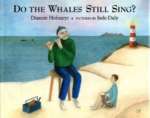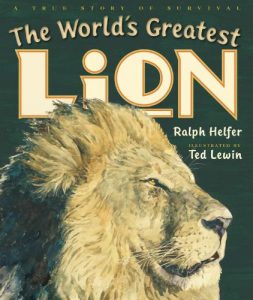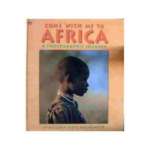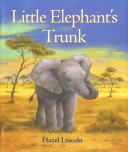
An old man tells the lighthouse boy about a successful sea captain who had made his fortune hunting whales, until their song entered his heart.
Catalog sorted by age group

An old man tells the lighthouse boy about a successful sea captain who had made his fortune hunting whales, until their song entered his heart.
 Perhaps the most recognizable Hollywood animal–outside of Lassie–is “Leo the Lion,” MGM Studios’ famous mascot. For decades his image introduced hundreds of motion pictures, and Zamba the lion acted in dozens more. But he wasn’t always a Hollywood star, and he certainly proved to be much more.
Perhaps the most recognizable Hollywood animal–outside of Lassie–is “Leo the Lion,” MGM Studios’ famous mascot. For decades his image introduced hundreds of motion pictures, and Zamba the lion acted in dozens more. But he wasn’t always a Hollywood star, and he certainly proved to be much more.
This real-life story of Zamba, told by world-renowned animal behaviorist Ralph Helfer and Caldecott Honor recipient Ted Lewin, follows the famous lion from an orphaned cub in Africa to iconic Hollywood actor. But Zamba’s greatest role wasn’t scripted and it certainly wasn’t captured on film. In 1969, the canyon that housed Ralph Helfer’s animal ranch was ravaged by floods. As death claimed many of the animals, dozens were led to safety by one heroic lion.

Nearly one hundred full-color photographs take young readers on a thirteen-country African safari that captures the rich diversity of African people, animals, and landscapes, from the desert Sahara to the rainforests of Zaire.
 “Elephant! Elephant! Heavy! Heavy! Heavy! Elephant! Elephant! STOMP! STOMP! STOMP!” Elephant was shouting and stomping. But could he stomp a hole deep enough to reach water for the thirsty animals? Maybe…maybe not. All the animals tried until tiny Gecko Gecko takes a turn. He is small…but he is determined. And he’s not going to give up! Kids will love to chant and stomp along to this Ugandan folktale.
“Elephant! Elephant! Heavy! Heavy! Heavy! Elephant! Elephant! STOMP! STOMP! STOMP!” Elephant was shouting and stomping. But could he stomp a hole deep enough to reach water for the thirsty animals? Maybe…maybe not. All the animals tried until tiny Gecko Gecko takes a turn. He is small…but he is determined. And he’s not going to give up! Kids will love to chant and stomp along to this Ugandan folktale.

Retells a Congolese tale in which an ugly and unloved twin discovers a magic tree that gives him everything he wants.

By watching the other African elephants as they drink, keep cool, cross the river, wallow in mud, and eat juicy leaves, a newborn elephant learns many uses for his wonderful trunk.